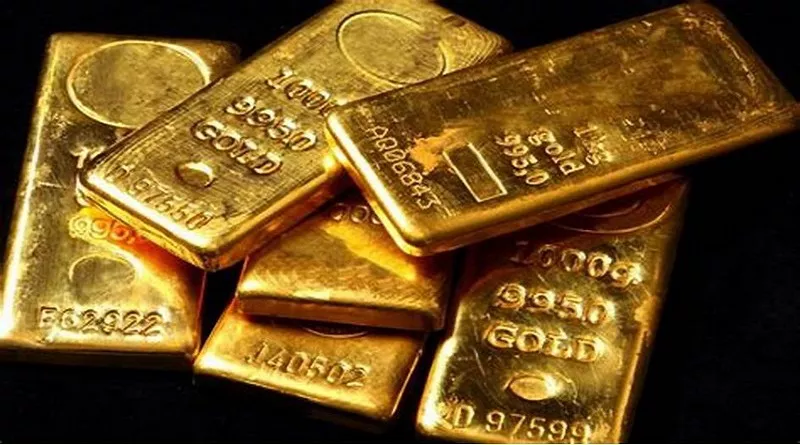Gold has long been a beacon of stability in uncertain times, often sought after as a hedge against economic turmoil and inflation. The price of gold is influenced by a myriad of factors, including supply and demand dynamics, inflation rates, currency values, and economic indicators.
Supply and demand play a significant role in determining gold prices. Increased mining activity or central bank sales can flood the market with supply, putting downward pressure on prices. Conversely, geopolitical tensions or economic uncertainty can drive up demand for gold as a safe haven asset, pushing prices higher.
Inflation rates also impact gold prices, as the metal is often seen as a store of value during times of high inflation. When inflation rises, investors may flock to gold as a hedge against the erosion of purchasing power.
Currency values also influence gold prices, as the metal is priced in US dollars on global markets. A weaker dollar typically boosts demand for gold, as it becomes cheaper for foreign buyers. Conversely, a stronger dollar can weigh on gold prices.
Economic indicators, such as GDP growth, employment data, and central bank policies, can also affect gold prices. Positive economic data may diminish the appeal of gold as investors seek riskier assets, while dovish central bank policies can spur demand for the metal.
Recent Gold Price Movements
Leading up to the recent sell-off, gold prices experienced a period of volatility amid shifting market sentiment. In the early months of the year, gold prices surged to multi-year highs as geopolitical tensions and concerns over inflation fueled demand for the precious metal. However, as the year progressed, signs of economic recovery and expectations of tightening monetary policy in the US dampened investor appetite for gold, leading to a gradual decline in prices.
Analysis of Current Events
Several recent events may have contributed to the sell-off in gold prices. One significant factor is the anticipation of interest rate hikes by the US Federal Reserve to combat rising inflation. Higher interest rates typically strengthen the US dollar and diminish the appeal of non-yielding assets like gold. Additionally, positive developments in trade negotiations between major economies and easing geopolitical tensions may have reduced the perceived need for safe-haven assets, further pressuring gold prices.
Economic Data
On the day of the sell-off, several economic indicators were released that may have influenced gold prices. The release of stronger-than-expected employment data signaled robust economic recovery, bolstering expectations of higher interest rates and dampening demand for gold as a safe haven. Additionally, reports of lower-than-expected inflation numbers may have tempered inflation concerns, further weighing on gold prices.
Market Reactions
The sell-off in gold prices elicited varied reactions from different segments of the market. Retail investors, who may have been drawn to gold during periods of uncertainty, may have liquidated their positions amid growing optimism about the economic outlook. Institutional investors and traders likely adjusted their portfolios in response to shifting market dynamics, reallocating capital away from gold and into assets perceived to offer greater returns in a rising interest rate environment.
Expert Opinions
Financial analysts and economists offer insights into the factors driving the sell-off in gold prices and their outlook on future trends. Some analysts attribute the decline in gold prices to expectations of tighter monetary policy and diminishing geopolitical risks. However, others caution that lingering uncertainties, such as the potential for renewed trade tensions or geopolitical conflicts, could reignite demand for gold as a safe haven asset in the future.
Historical Context
The sell-off in gold prices bears resemblance to past events where similar price movements occurred. Historical data suggests that periods of economic recovery and expectations of higher interest rates have historically been accompanied by declines in gold prices as investors pivot towards riskier assets. However, the persistence of geopolitical tensions or unforeseen economic shocks could disrupt this pattern, underscoring the importance of diversification in investment portfolios.
Future Outlook
Looking ahead, the sell-off in gold prices is likely to have implications for future trends in the market. While the prospect of higher interest rates may continue to weigh on gold prices in the short term, ongoing uncertainties surrounding inflation, geopolitical tensions, and economic recovery could prompt renewed demand for the precious metal as a safe haven asset. Investors should closely monitor developments in key economic indicators and central bank policies to navigate potential opportunities and risks in the gold market.
See also Which Is The Best Gold Etf In Indian Market? A Full Analysis
Investment Advice
While not providing direct financial advice, investors may consider several strategies during periods of market volatility. Diversification remains paramount, as it can help mitigate risk and capture potential upside across different asset classes. Additionally, maintaining a long-term perspective and avoiding reactionary decisions based on short-term fluctuations can help investors navigate market turbulence with confidence. Finally, consulting with a financial advisor or conducting thorough research before making investment decisions is advisable to ensure alignment with individual financial goals and risk tolerance levels.


